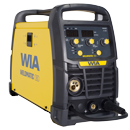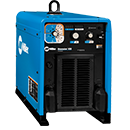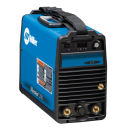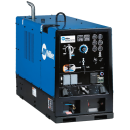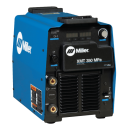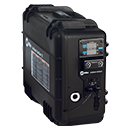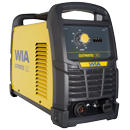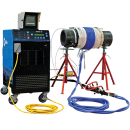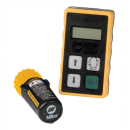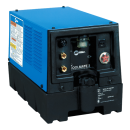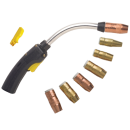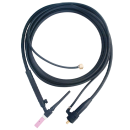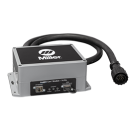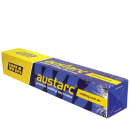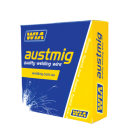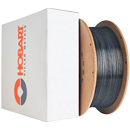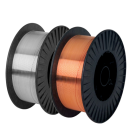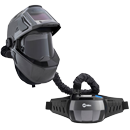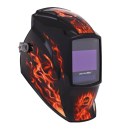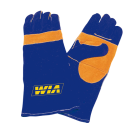From Basic to Advanced: Wirefeeders Impact Quality & Productivity
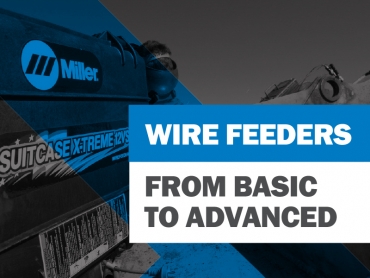
Having the right wirefeeder for the job can reduce unnecessary downtime associated with poor wire feeding and can improve weld quality, and also lower costs and increase productivity.
Working with the right wirefeeder allows for more time welding rather than wasting time fixing wire feeding issues.
When selecting a wirefeeder, it’s important to consider how often it will be used, as the feeder needs to be durable enough to handle the job. It’s also important to factor in the welding gun type and length, as well as the wire type and size that will be used.
There are three types of wirefeeders, basic, intermediate, and advanced. We explain the differences below.
Basic wirefeeders - Feature one main control which adjusts the wire feed speed, these are typically the most cost-effective. These types of wirefeeders don’t include meters to indicate how much wire is passing through to the gun nor do they display the exact wire feed speed. They usually don’t feature remote voltage control; to change the voltage, the operator has walk to the power source. Basic wirefeeders use a two-roll drive system, which works well with welding guns up to 4.6m long, or a four-roll drive system for welding guns up to 7.5m long. Since the motor is less powerful, they are best suited for wires with a smaller diameter.
More critical welding applications involving pipe, bridge, structural or ASME code work require welding operators to know the exact voltage and wire feed speed they are working with, therefore an intermediate or advanced wirefeeder would be necessary for these jobs.
Intermediate wirefeeders - Usually have four-roll drive systems and are available in single and dual models that hold either one or two spools of wire. These systems grip the wire better and can push larger wire than a simple, two-roll drive system. Some intermediate feeders can even push wire up to 3mm in diameter.
Intermediate models can be used with guns, up to 7.5m, and typically have more advanced features. Most models include digital meters that allow welding operators to see the precise wire feed speed and voltage, and also allows them to control the voltage at the feeder. This voltage control can boost productivity by allowing operators to adjust the voltage at the wirefeeder rather than at the power source, which could be placed further away. Intermediate models also typically have a run-in control that allows the wire to feed into the weldment very slowly for smoother arc starts.
Advanced wirefeeders - Offers the most control over how they start and stop the wire, and how much speed it has. They typically feature enhanced displays that allows the operator to accurately view a variety of settings.
Advanced wirefeeders are ideal for the most critical manufacturing jobs, and can accommodate multiple materials. Today’s models are capable of switching between programs while welding and are well suited for jobs that use advanced welding processes, like synergic pulse MIG welding.
Advanced wirefeeders often offer dual schedule that allows welding operators to switch between two different sets of welding parameters. They also typically include gun trigger options that allow the operator to select between multiple weld programs. This is ideal for higher-end, high-production cells where it’s necessary to weld different parts and where the operator must set up several programs to weld a variety of parts in the same cell.
Some advanced wirefeeders have multiple memories and programs for different types of materials. These features allow welding operators to program pre-sets and create programs specific to various wires and materials. For example, a welding operator could have one program for welding with metal-cored wire, one for welding silicon bronze and another for welding aluminium. These pre-sets can then be stored in the wirefeeder and selected when needed. This feature allows operators to run multiple programs and easily make adjustments, and it also helps expedite setup time, ultimately boosting productivity.
Advanced wirefeeders can also have program locks, limits and ranges, which helps keep the welding operator within certain operating windows. In addition, they often have pre-flow, a start parameter, a crater parameter and post-flow. Pre-flow helps ensure welding operators have good gas coverage and reduces the risk of porosity at the start of the weld. The run-in parameter helps bring the wire in slowly to ensure smooth arc starting, and the end or crater parameter and post-flow parameter minimize the opportunity for craters or porosity to appear at the end of a weld.
Conclusion
As with any piece of welding equipment, having the right wirefeeder for the job makes a big difference in the overall efficiency of a welding operation. By matching the most appropriate wirefeeder to the application, welding operators can minimize unnecessary downtime caused by troubleshooting wire feeding problems or addressing quality issues that may require rework.
Take the time up front to determine the needs of a welding operation and then select the best wirefeeder for it accordingly. When in doubt, contact a one of the WIA equipment specialists or WIA distributors to help you make the right choice.






